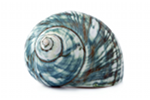



Cellular phenotype imaging is an experimental technique used to extract information about the effects of certain reagents on growth, mobility, fecundity etc of living cells in vitro. Reagents are added to plated cells and imaging followed by image processing techniques are used to identify the existence of certain predefined phenotypes as existing prominently within the cell culture. For more details see the experiment definition.
Substantial scientific value is provided by the archival of data because it removes the need for duplication of experiments which is very costly and creates a potential for new discoveries through re-analysis related to questions beyond those of the producing research group.
Aggregation of the data will lead to a better understanding of the “cellular phenotype space” and the potential to open a new dimension of comprehensively characterizing gene and drug function in divers cellular processes.
CPI datasets are currently becoming more numerous, due to the wider availability of screening microscopes, computational resources, and RNAi and compound libraries; and due to recent landmark publications. It is therefore timely and necessary to start with the creation of a CPI data resource. The technology of genome-wide perturbation libraries continues to develop (target specificity and efficiency, complexity of the transcriptome) and future datasets are likely to be further improved in terms of transcriptome coverage and false negative rates. We are currently not aware of a project of similar scope internationally, which would give Europe a leading position in this area.
The scope of this project is limited to cell-based assays using large scale perturbations such as RNAi causing loss of function, over expression causing gain of function and small molecules causing inhibition. We choose not to consider: images of whole animals or tissues; pathology and anatomy; images documenting detailed process-oriented cell-biological experiments; electron microscopy structures; developmental of disease phenotypes.
The creation of a successful CPI database will be a substantial task that requires large resources and a long-term commitment. Among these are:
- Large disk and web server hardware.
- Skilled and innovative database engineers to find technical solutions for dealing with the large amount of data.
- Strong scientific guidance by leaders in the field.
- Getting community buy-in (from submitting experimental scientists, journals, funding bodies).